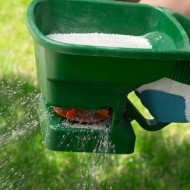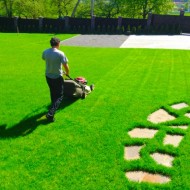How and when to sow lawn grass: step-by-step instructions for beginners
Content
Features and benefits of lawn grass
The selection and improvement of the grass crops that have become the basis for the modern lawn have been carried out over several generations. First of all, breeders tried to give their brainchild:
- bright, rich green colors;
- density and softness;
- the ability to resist trampling and mechanical damage;
- immunity to common diseases;
- drought tolerance;
- long life span;
- the ability to form a dense carpet.
The requirements for the growth rate and the maximum height of the greenery were minimal, but when planting a low-growing variety, you will have to take care of the lawn (cut, equalize) less often.
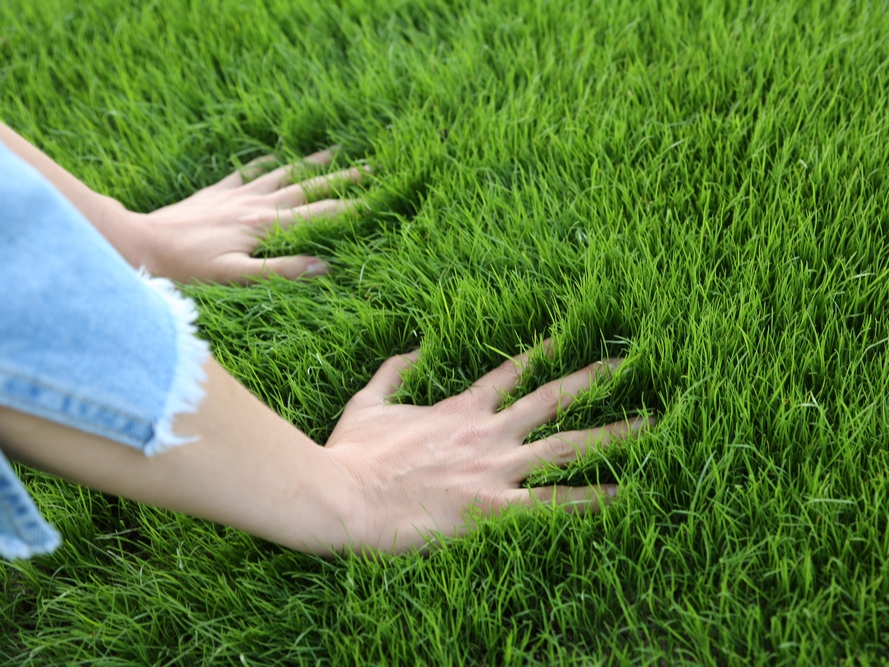
By purchasing high-quality lawn grass, carrying out agrotechnical work, the owner of the site will receive uniform shoots in a couple of weeks and the next few years will be able to admire them in the spring-summer seasons. Experienced gardeners recommend changing the grass on the lawn every 3 years, although the timing may be less frequent. But after a specified time, the planted crops begin to hurt, and the struggle is rarely successful.
When is the best time to sow a lawn
Landscaping of the site in our country can be done all season. Each season has its own pros and cons to be aware of.
In the spring
Seed growth during this period is noticeably accelerated. Daylight hours are lengthening, and the air temperature is steadily increasing. It is advisable to sow grass in spring in April, while the moisture in the ground remains. If you plan to plant in May – June, take care of regular and abundant watering.
Summer
July – August are quite suitable for successful planting of lawn grass mixtures. The only drawback during this period is that more seed material will be needed, since part of the seeds will burn out in the heat, and another part will have to be used to eliminate bald spots, which will certainly appear on the lawn later. Watering in summer is also carried out more intensively than in other periods.
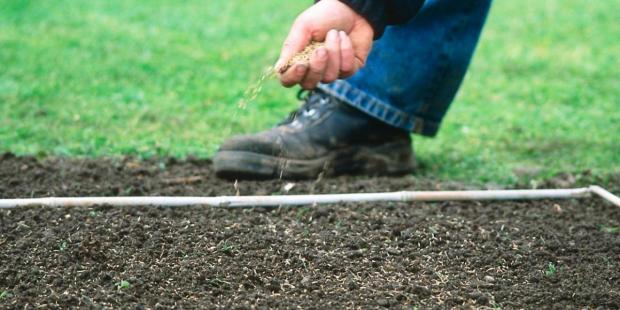
If you manage to avoid all the difficulties, summer landing will provide many benefits:
- seedlings will appear in a week;
- bald patches are detected before the onset of cold weather and are successfully re-seeded;
- it will be possible to use the lawn until late autumn.
Gardeners consider August to be the most successful month in summer - the previous heat subsides, the humidity grows, and the moisture in the ground becomes more.
In autumn
This period is most preferable for lawn planting. There are several reasons for this:
- Drying heat comes to an end, daily temperature fluctuations become smooth.These conditions allow the seeds to germinate faster.
- The humidity of the air and soil is optimal. Morning dew and short-term precipitation evaporate more slowly, contributing to the abundant saturation of the soil with moisture.
- The weeds are less aggressive and do not interfere with the growth of the main crop.
Autumn planting also has a drawback - early night frosts can easily destroy seedlings. Planting in the autumn months is suitable for regions where such cold weather is rare. Autumn disembarkation can be early (end of August) or sub-winter (end of October).
The minimum temperature required for autumn seedlings is + 6–8 ° C. For regions with thaws up to +10 ° C, autumn planting is not suitable.
Summing up, we will give recommendations on the timing of sowing for different regions of Russia:
- in the south: during March;
- in the middle lane: during April;
- in the Urals, in Siberia: late April - early May;
- northwest: early May.
What kind of herb is best to use
You need to stock up on high-quality seed materials. The seeds must be grafted. Another option is to purchase several strips of rolled lawn in specialized stores.
However, you can find material in the surrounding nature. Cereals are often used - oats, rye, etc. If you live in the south, meadow grasses are suitable, for example:
- meadow bluegrass;
- meadow fescue;
- field grass;
- ryegrass.
Inhabitants of the north should select grass mixtures designed for the local climate.
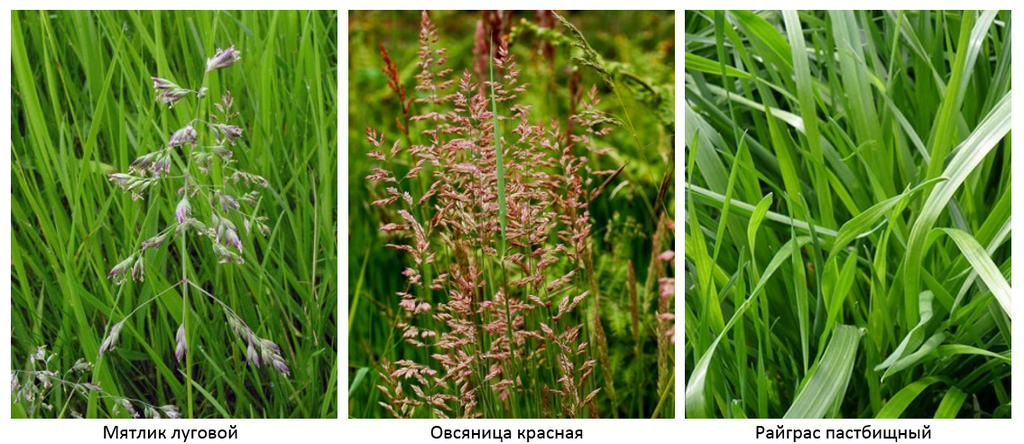
Sowing and lawn care tools
For all operations, you will need a standard tool. You need to stock up:
- metal and wooden rakes;
- wooden meter slats;
- mosquito netting (cover crops from the sun);
- different types of fertilizers (50 g per square of crops);
- watering can with fine spray;
- scales (you need to measure the amount of grain);
Video "Planting a lawn step by step"
In this video, experts tell how the lawn is planted on the site.
Step-by-step instructions for sowing lawn grass
Having decided on the timing, preparatory work begins. The rules are simple, but they need to be followed exactly.
Site preparation
In all seeding periods, the plot is prepared in the same way. About a month before the start of work:
- clearing the place of debris, stones, bushes and stumps;
- apply top dressing (humus or compost), begin to water abundantly - this will make the soil more fertile, at the same time encouraging the existing weeds to grow more actively;
- if the ground is heavy, they loosen and mix the sand, improving aeration;
- the acidity is brought to the optimum: 5.5–7 pH, adjusting by adding lime or dolomite flour.
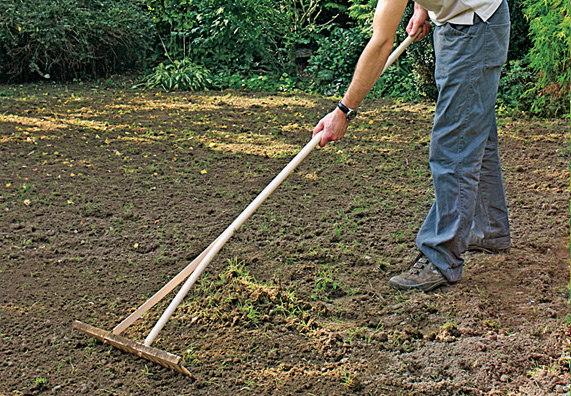
Drainage
It is impossible for water to stagnate in the area being prepared or the soil is too wet. The problem is solved by drainage, for which:
- remove the top layer of the soil;
- pour a layer of drainage 15–20 cm high from fine gravel, pebbles or broken brick;
- raise the level by another 10 cm, creating a sand cushion;
- leveled by ramming with a thick log;
- return the humus to its place.
Surface leveling
After a couple of weeks, when the ground shrinks a little, the territory is trimmed. To do this, cut off the existing hills, hummocks, fill up the resulting dips.
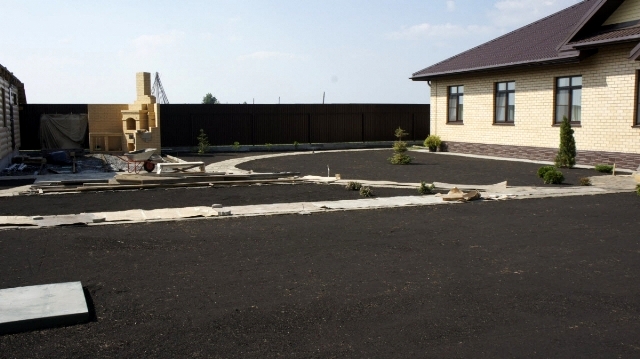
Tillage, crushing and final cleaning
Before planting, all the weeds are pulled out, the earth is dug up, getting rid of everything that will interfere with growth. Be sure to get rid of lumps by breaking them with a rake or pitchfork. Remaining stones and debris are removed. If there are too many weeds on the site, at the stage of preparation the soil is treated with herbicides.
Rammer
Again they start compaction of the soil - with a thick log or a garden roller. Before tamping, the site is marked with pegs and twine, achieving perfectly straight lines and angles.If there are no tools at hand, you can simply moisten the ground, then trample with your feet, placing a wide board. When new pits or bumps are found, they are filled up or broken. Upon completion, the footprints from the shoes are leveled with a rake. To strengthen the soil, abundant watering is carried out.
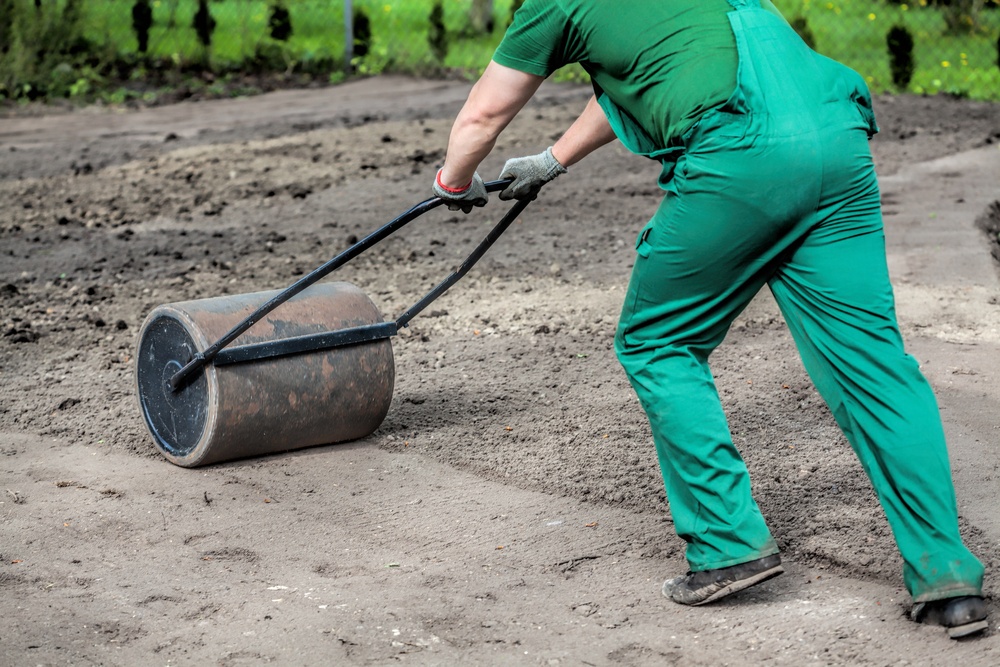
Parcel hovering
After clearing, digging and leveling, the ground should be allowed to stand under steam for about a month (preferably two), periodically removing the weeds. This step can be skipped if you are installing an industrial turf turf.
Such protracted stages, by the way, justify the opinion of experienced gardeners that it is better to start sowing lawn grass in the summer in order to have time to complete it in the fall.
Fertilization
About a week before planting, mineral fertilizers are scattered on the site, evenly distributing them over the entire surface with a rake. Potassium-phosphorus or specialized lawn formulations are suitable.
Sowing the lawn
35-50 g of seeds are harvested per square meter of crops. Some excess will not hurt, you may have to re-sow. It is advisable to sow on a dry, cloudless day by the time the topsoil is dry and the bottom is still wet. The day before planting the seeds, they again go through the site with a rake, loosening large lumps of earth. If seeds of several varieties are used, it is better to mix them, then the lawn will turn out to be more picturesque.
To plant a lawn, follow this algorithm:
- divide the seed into 4 equal shares, they need to be sown in turn every quarter of the plot;
- sowing is carried out measuredly, scattering the seeds along and across the grooves left after loosening;
- they drop the material to a depth of 5 cm, walking with a fan rake and trying not to trample the ground;
- do not leave lumps of earth that exceed the size of a wheat grain;
- it is allowed to roll the area with a roller a little;
- if the weather is hot, the seeds are watered from a watering can or the drip irrigation system is turned on.
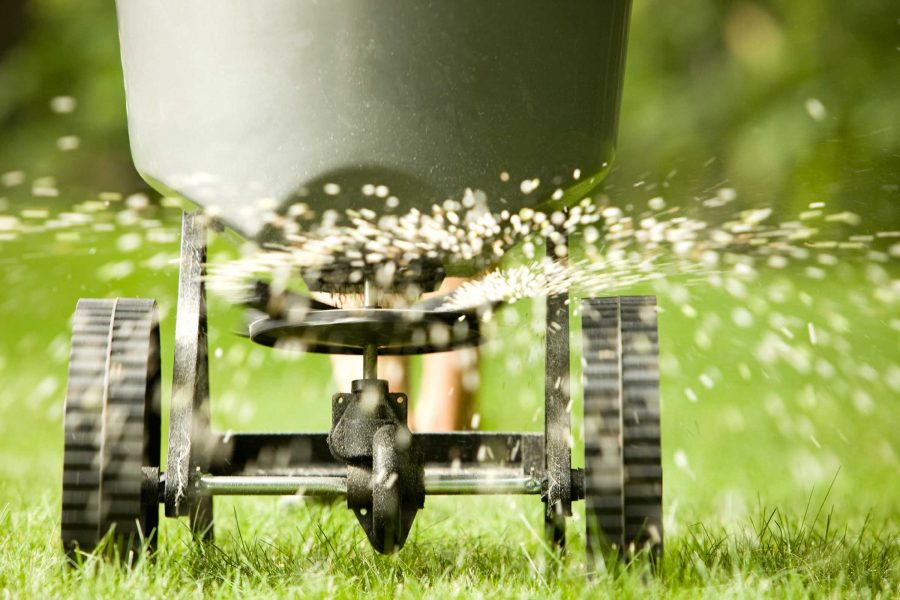
Seasonal lawn care
The first mowing is performed when the grass stretches 10–15 cm. Before that, you should not walk on the lawn, so as not to injure the young growth. Water the entire site daily until the first shoots. To prevent the grass from turning yellow, in the heat, the lawn is irrigated twice a week and only in the evening.
Depending on the season, lawn care is performed according to the table.
| In the spring | Summer | In autumn |
| 1. Collect fallen leaves, garbage | 1. Comb the grass | 1. Collect fallen leaves, garbage |
| 2. They are fed with nitrogen-potassium fertilizers | 2. They loosen the soil, carry out aeration | |
| 3. Water once a week | 3. Watered 2 times a week | 3. Fed with phosphorus fertilizers |
| 4. They loosen the soil, carry out aeration | 4. Regularly trim growing grass | 4. Water once a week |
| 5. Trim to preferred height | 5. Get rid of weeds | 5. Cut for winter up to 10 cm |
| 6. Get rid of weeds | 6. Sow, getting rid of bald spots (if any) | 6. Get rid of weeds |
| 7. Sow, getting rid of bald spots (if any) |
|
|
Aeration is necessary to provide the roots with air, moisture and better access to fertilizers. For aeration, you can walk on the lawn with shoes with spikes that pierce the ground, or use an aerator rake or roller aerator.
- Watering
- Fertilization
- A haircut
Let us mention diseases that are dangerous for lawns. In warm, damp climates, mold or powdery mildew can develop on the grass. As soon as the first signs appear, the lawn is treated with Bordeaux liquid or an appropriate fungicide.
If you correctly follow the planting technology, even a beginner manages to achieve a good result.We hope our advice will save gardeners from common mistakes, save time, allowing them to become the owner of a picturesque dense lawn.


